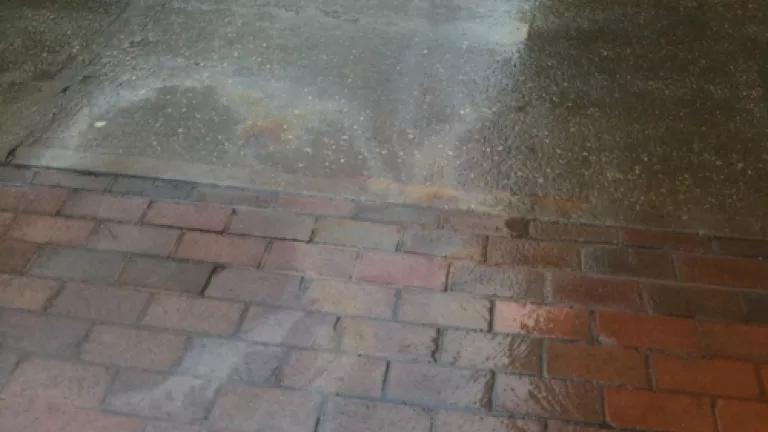
The House of Representatives is scheduled to vote next week on the “Red Tape Reduction and Small Business Job Creation Act” (H.R. 4078) – a bill that, among other things, imposes a moratorium on issuing virtually any new regulations as long as unemployment remains above 6%, regardless of the substance of such regulations or support for them. The EPA’s forthcoming reforms to the national requirements that govern sources of polluted stormwater runoff are just one example of a standard that would be blocked by this bill.
Last month, NRDC released a report showing how harmful polluted stormwater runoff can be to our health and our economy. “Testing the Waters” analyzed water quality at U.S. beaches in 2011. It found that the trillions of gallons of untreated stormwater runoff that make their way into our water bodies each year can cause beaches to violate health standards and make people sick. In fact, stormwater runoff is the largest known source of pollution that led to beach closings and advisories last year, harming local economies as well as swimmers.
In urban and suburban areas, rainwater picks up bacteria in pet and wildlife waste and garbage as it runs from roads, buildings, and other impervious surfaces into storm sewers. In 2011, polluted runoff and stormwater caused or contributed to 10,954 closing/advisory days at coastal and Great Lakes beaches.
- Polluted runoff from a sidewalk in Washington, D.C.
And that’s more than bad news for swimmers. Beaches are the top tourist destination in the country – one study estimates that swim bans at Chicago beaches cost the local economy more than $2 million a year. Another study estimates that closing all the beach sites on Lake Michigan could cause losses as high as $2.7 billion.
Often, the best way of avoiding runoff-related pollution is to reduce the volume of stormwater flowing into the storm drains that carry it to nearby water bodies or, in some cases, to sewage treatment plants. However, existing EPA rules for handling stormwater were designed more than 20 years ago. These antiquated rules haven’t kept up with changing development patterns and our increased understanding of how stormwater flows through communities and the best ways to manage it. As a result, local water quality isn’t protected, putting beachgoers and local economies at risk.
To fix this problem, the EPA has initiated an effort to reform the minimum requirements for urban and suburban runoff sources. This is a once-in-a-generation opportunity to improve stormwater controls and protect our local water bodies from pollution and erosion. The agency has been working on new requirements and is expected to propose a rule in the next year.
The new rules will likely adopt requirements to limit runoff volume from developed sites, creating strong incentives for the use of green infrastructure techniques – rain gardens, street trees, and green roofs – that create jobs, provide wildlife habitat, reduce energy use in buildings, and increase property values, in addition to protecting local waters. The City of Philadelphia’s landmark investment in green infrastructure is projected to yield more dollar value in benefits than the city will invest.

